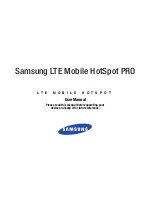
724-746-5500 | blackbox.com
Page 32
724-746-5500 | blackbox.com
Chapter 2: Preparing for a WAN Deployment
Signal-to-Noise
Ratio
Distance
Noise
Received Signal
Wall
Figure 2-11. Path loss through a wall.
Microwave ovens, wireless video cameras, Bluetooth headsets, and cordless phones can all interfere with Wi-Fi signals (see Figure
2-5). Excess noise in an environment is often difficult to diagnose and can have a major negative impact on network performance.
To discover noise sources, a spectrum analysis system is needed. AirMagnet provides an affordable spectrum analysis tool that
operates in the 2.4-GHz and 5-GHz spectra.
Signal-to-Noise
Ratio
Distance
Noise
Received Signal
Figure 2-12. Path loss with noise (from a microwave).
Now that you have a sense of how Wi-Fi performance changes over distance and with noise, look at some ways to perform
channel assignment. If two access points are on the same channel right next to each other, they are forced to share the same
spectrum. This means that they share the 54-Mbps speeds available in 802.11a/g or the 300-Mbps speeds in 80211n rather than
each being capable of 54- or 300-Mbps speeds independently. This essentially halves the bandwidth for each access point. To
manage this situation, make sure that neighboring APs are on different channels and that their power is adjusted so that it does
not overlap that of other APs with the same channel.
















































